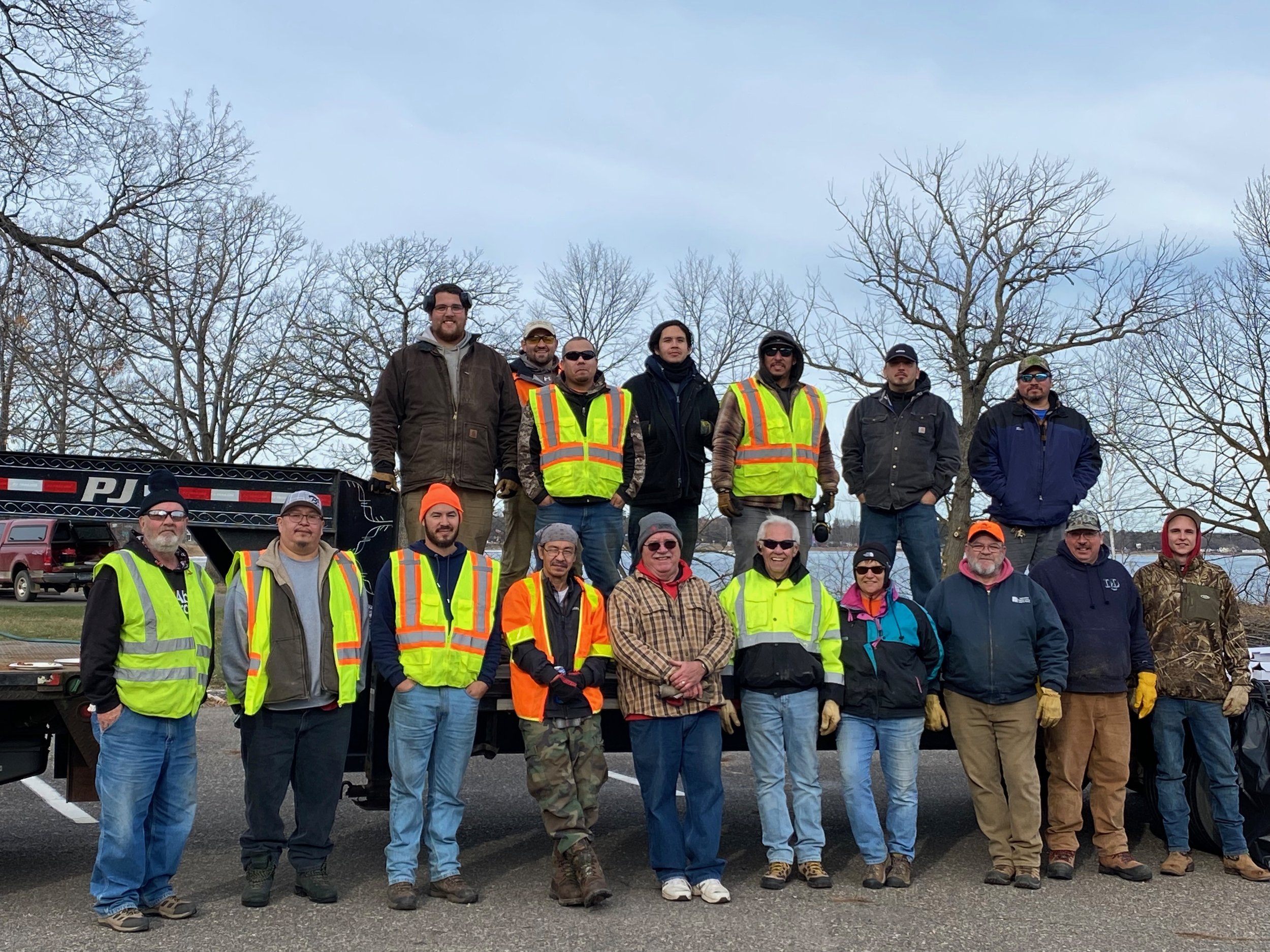Through a Cultural Lens Preserving the Spiritual Connection to Garrison Village
By VIVIAN LaMOORE, EDITOR
They arrived bright and early on a brisk November morning to the shores of Mille Lacs Lake armed with chainsaws, trimmers, work gloves, brush hogs, and chippers. Crews from the Mille Lacs Band of Ojibwe Department of Natural Resources, representatives from MnDOT and volunteers from the Garrison area were present with a common goal. Their mission: to trim overgrown brush and clear decaying trees located at the south Garrison public access while recognizing the cultural elements of the area.
This project is more than an average cleanup. This project was approached with a focused view using a traditional cultural lens while emphasizing Anishinaabe values and the pro- found traditional connection to the land and the circle of life. The project is a collaborative partnership effort between tribal, local, and state governments in a very tangible representation of government-to-government relations. The Mille Lacs Band of Ojibwe, the City of Garrison, and the Minnesota Department of Transportation are partnering on the project.
In June of 2021, the Mille Lacs Band was approached by Garrison Mayor Loren Larson to discuss, in his words, the goal of beautifying the shoreline and the rest area/boat landing in south Garrison in an effort to attract tourism. MnDOT actually owns the land in the area and had been working with the Mille Lacs Band Tribal Historic Preservation Office (THPO) in identifying culturally sensitive areas around the lake, including the Garrison area.
The wide-spread area has a rich history of Dakota and Ojibwe villages. The location there in Garrison was the site of an Ojibwe village.
With the history and cultural sensitivity of the area in mind, Larson’s approach was to respectfully request working with the Mille Lacs Band. The three entities worked together to find a solution and agree to move forward together in a manner that would protect and preserve the cultural sensitivity of the area while removing brush and other items in the area so the shoreline would be more inviting to visitors.
The Band’s DNR and the City of Garrison moved forward as joint-permit holders to work collaboratively to clean up the area and do so in a manner that would not disturb the grounds.
"The Mille Lacs Band Department of Natural Resources is greatly appreciative of the cooperative efforts between the Minnesota Department of Transportation, Minnesota Department of Natural Resources and the City of Garrison to protect sensitive archeological areas while managing vegetation near the City of Garrison," said Kelly Applegate, Mille Lacs Band of Ojibwe Commissioner of the Department of Natural Resources. "These types of projects benefit the area communities with respect to tribal sovereignty, which is our goal as resource managers. We look forward to the continued partnerships into the future."
The first phase of the project began on November 30, 2021. Future plans include but are not limited to further clean- up from the bridge north towards the concourse. Garrison area volunteers and the Band DNR Woodlands crews worked together diligently to trim brush areas close to the shoreline in pre-selected areas with specific instructions, including protecting trees with a good root base to help protect against shoreline erosion, and managing the shoreline vegetation. Cutting trees of any size was kept to a minimum. Larger trees were only cut if they were decaying and the possibility of them uprooting and falling resulting in disturbing the grounds was imminent.
“My hope is this is the beginning of a great partnership working with the Band, and of course MnDOT,” Larson
said. “This is a good joint effort that will hopefully solidify a relationship with the Band. When we all work together respectfully, we can accomplish so much more.”
The Band DNR brought in machinery that included a brush hog, chainsaws, and wood chipper along with various other tools. The Band brush hog made for quick cleanup of large areas of brush that were blocking the view of the lake from the newly named Mille Lacs Scenic Byway, otherwise known as State High- way 169. Some of the larger branches were cut up and will be saved for ceremonial funeral uses. The smaller brush was put through the chipper and spread out on ground to naturally recycle.
“This is truly an example of how we can all partner and work together respectfully in a way that benefits all,” Larson said. “And have a little fun while we are at it.”





